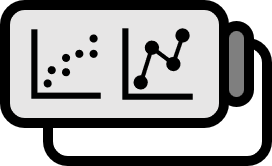Drift in the ARIMA Model
Explanation
When analyzing time series, one often comes across a coefficient called Drift.

Of course, in the case above, the coefficient is too small compared to the standard error to matter. However, if you actually have a significant coefficient and need to write it down in a formula, it’s necessary to understand what a drift is. Unfortunately, there are no good explanations about what drift actually is domestically, and without involving formulas, it can only be described as something ‘similar to a constant term’.
If you’re not interested in reading formulas and it’s not crucially important for analysis, just knowing it as a constant term or an average should suffice. See the second analysis below if that’s the case. Of course, if you’re a major in the field, it’s strongly recommended to follow the formula derivation at least once.
Mathematical Explanation
Let’s start with the ARIMA model $$ \nabla^{d} Y_{t} := \sum_{i = 1}^{p} \phi_{i} \nabla^{d} Y_{t-i} + e_{t} - \sum_{i = 1}^{q} \theta_{i} e_{t-i} $$. No, let’s start with something simpler without difference, the ARMA model. $$ \begin{align} \displaystyle Y_{t} - \sum_{i = 1}^{p} \phi_{i} Y_{t-i} = e_{t} - \sum_{i = 1}^{q} \theta_{i} e_{t-i} \end{align} $$ To simplify, let’s use the following expression involving the backshift $B$. $$ \phi (B) := \left( 1 - \phi_{1} B \cdots - \phi_{p} B^{p} \right) $$
$$ \theta (B) := \left( 1 - \theta_{1} B \cdots - \phi_{q} B^{q} \right) $$ Applying this expression to $(1)$ results in $$ \phi (B) Y_{t} = \theta (B) e_{t} $$ This is another representation of the ARMA model, where we add a constant term $c$ as follows. $$ \phi (B) \left( Y_{t} - c \right) = \theta (B) e_{t} $$ Here, $c$ in equation $(1)$ is what we refer to as the Drift. Looking at the formula, you will understand why the drift is described as a ‘constant term’ or an ‘average’. Of course, this is the ARMA model, and in the ARIMA model with difference included, it appears differently. For convenience, consider only taking $d=1$ times in $ARIMA(p,1,q)$ when thinking about the difference. $$ \begin{align} \phi (B) \nabla \left( Y_{t} - a - b t \right) = \theta (B) e_{t} \end{align} $$ In equation $(2)$, $a$ is called the Intercept, and $b$ is called the Drift. Dissecting the difference reveals $$ \begin{align*} & \phi (B) (1 - B) \left( Y_{t} - a - b t \right) = \theta (B) e_{t} \\ \iff & \phi (B) \left[ \left( Y_{t} - a - b t \right) - \left( Y_{t-1} - a - b (t-1) \right) \right] = \theta (B) e_{t} \\ \iff & \phi (B) \left[ Y_{t} - Y_{t-1} - a + a - bt - b(t-1) \right] = \theta (B) e_{t} \\ \iff & \phi (B) \left( \nabla Y_{t} - b \right) = \theta (B) e_{t} \end{align*} $$
Eventually, $b$ serves the same function as $c$ in $(1)$, therefore it’s logical to call it Drift. Although analyses requiring more than two differences are rare, this method can also be generalized for natural numbers $d$. [ NOTE: People familiar with mathematical intuition might recall the phenomenon where taking a difference in the constant term $a$ in $(2)$ makes it disappear, reminiscent of differentiation. ]
Practice
 Returning to the analysis. As you can see, or as expected, the $ARIMA(1,1,2)$ of the data and the $ARIMA(1,0,2)$ of the data with difference taken are naturally the same. The only difference is that the name of the coefficient written as
Returning to the analysis. As you can see, or as expected, the $ARIMA(1,1,2)$ of the data and the $ARIMA(1,0,2)$ of the data with difference taken are naturally the same. The only difference is that the name of the coefficient written as drift in $ARIMA(1,1,2)$ has changed to mean in $ARIMA(1,0,2)$. It would be better if you understood the formula, but even if you didn’t, you might guess that drift is something ‘similar to a constant term or an average’.
Code
library(TSA)
data("oil.price")
out<-auto.arima(oil.price); summary(out)
out<-auto.arima(diff(oil.price)); summary(out)
